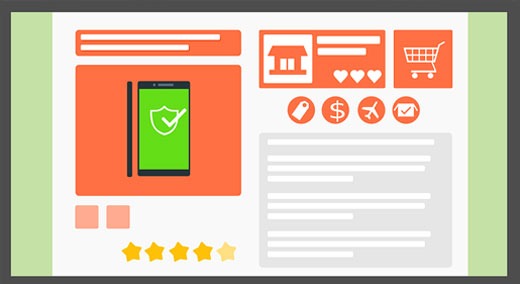How to make your website’s content better
The not-so-secret of a successful website lies largely on its content. These days in the digital marketing world, digital marketers and publishers are playing the field by producing as much quality content as possible. A website’s content is what makes or breaks a business.
The general thinking is that a well-written content in an SEO sense will rank high on search engines results and pull in more traffic, and increase more conversions and sales. If you want your website to generate more traffic, make sure that you’re putting content that will make your visitors come back instead of driving them away.
First of all, you should write good-quality, unique, and original content. Here are seven more tips that you can use to make your website more appealing to your visitors and potential customers:
 1. Write conversationally
1. Write conversationally
A good website “speaks” to its visitors. When you’re writing your content, remember who you’re writing for. You’re not writing a website in such a way that you’re writing a dry and formal research paper. An overly formal writing style will turn your readers off or will bore them. As a result, they would rather find a website whose content is less formal, and more interesting and engaging.
Just remember: a website should speak to your customers as you would chat with your best friends on Skype or in real life.
2. Keep things brief and simple as much as possible
You don’t have to sound fancy by writing those bombastic, convoluted words that can go on for pages and pages. Long, wordy texts and sentences can be intimidating to read. Try to avoid too much fluff with flowery words and jargon. People won’t waste their precious time trying to figure out “too deep” words just to see what your company does, what services it offers, or what products it sells. Keep it simple and conversational as much as possible. Be brief, concise, and straight to the point so that your readers will get your message across quickly.
3. Use visual content
People will be more drawn to seeing images (captioned or not), slide presentations, and videos than to have to read through a page full of text. Visual content works best when introducing complex products and services. But these days every business should consider having visual content on their websites.
And why not? A website will look blah if it doesn’t have a lot of images. And image-rich content will definitely catch more attention from your visitors. With the advent of smartphones and tablets as the preferred device over laptops and PCs, uploading pictures and videos has never been easier and more effective. And with the improvements in internet speeds, loading images and videos will be done in no time.
4. Make your content easy to scan
Most web visitors scan a website’s content first, and if the text looks convenient to read, then they will be interested to read the rest of the content.
Brief but concise sentences, short paragraphs, and clear headlines will be the chief factors of an easy-to-scan website content. The easier your website’s content looks, the more interested your visitors will be to linger longer on your website.
To have better-looking content, divide information into small portions with clear headlines. An example of easy-to-scan website content should include headings and sub-headings that highlight the features of the company’s product. This layout will make the website easier for the visitors to read and understand.
5. Update your content regularly
Updating the content of your website is nothing remotely different from having a make-over done to your little coffee shop. A new, refreshed look of your cafe will keep your regular patrons coming while attracting new potential customers.
Most regular visitors don’t want to look at the website that stays stuck with the old content. If you want to maintain the interest of your customers while you think of ways to entice new ones, you should update your site’s content for at least once a year. For websites that feature dozens of individual pages or links, updating content could be a huge job. But the hard work eventually pays off in the end.
Also, remember to re-evaluate your content every time you have plans to change the layout of your website. When you change your website’s design, you need to study first on how your content will make the most out of your website’s new and updated layout.
6. Proofread your content over and over
You think that bad spelling and wrong grammar won’t affect much your websites’ overall performance. However, professionally-written content is more effective in garnering leads and sales, as compared to poorly-written content.
Granted, some people won’t even bother to notice those misspelled words and grammatical errors. However, other people who do notice them will most likely think twice about working with a company who doesn’t pay much time and attention to accuracy.
To facilitate your editing work, use proofreading tools such as PaperRater and SpellChecker to get error-free articles. It is also helpful to read the text out loud because you may notice something while speaking it than you do while simply reading.
 7. Analyze site data and track leads
7. Analyze site data and track leads
Your site data is helpful in telling you about your sites’ overall performance. For instance, which of the pages do people visit most frequently? Least frequently? The longest or the shortest? From which pages are your visitors going to your site? Your site data will reveal on what parts of your website you should focus on and what parts you should omit.
You should be aware of the source page of every website inquiry every time you’re tracking leads. For instance, if your first page is getting more inquiries than the second page, you may be able to identify some problem areas on the content of the second page. Then address and tweak these areas to improve the page’s effectiveness.
Related links
- 16 Ways to Improve Your Content Marketing Strategy | CIO
Web content strategy experts share their top tips on how to increase traffic to your Web or e-commerce site. - 5 Ways To Improve Your Website | Fast Company | Business + Innovation
As the face of your company to the world, a good website is a must-have for your business. Here’s how to make it not only attractive but functional… - Improve Your Website Content With These Tips | SEO Chat






